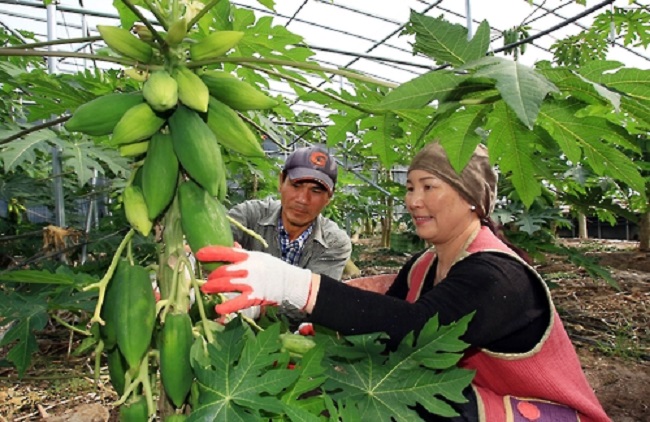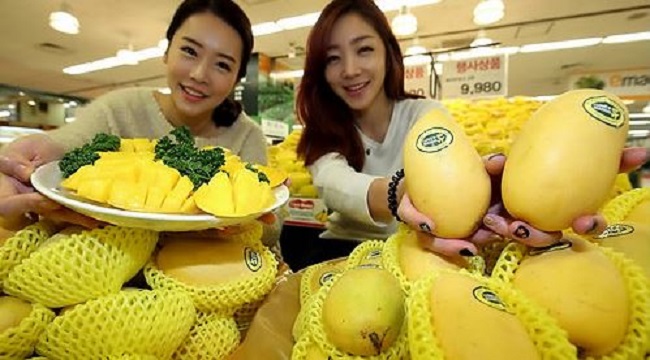
Recent research by the Rural Development Agency has revealed that not only will “Grown in South Korea” stickers pasted onto bananas and papaya become more common, an even greater diversity of former subtropical fruits are expected to be grown and harvested on the peninsula. (Image: Yonhap)
SEOUL, Aug. 30 (Korea Bizwire) — The effects of climate change are being felt in the fruit section of the supermarket, where consumers will increasingly come face to face with a 21st Century oddity: homegrown papaya and bananas.
Recent research by the Rural Development Agency has revealed that not only will “Grown in South Korea” stickers pasted onto bananas and papaya become more common, an even greater diversity of former subtropical fruits are expected to be grown and harvested on the peninsula.
The agency weeded out a list of 20 different fruits and vegetables suitable for domestic agriculture from a total of 50 subtropical produce, an esoteric list that includes okra, artichokes, chayote, malabar spinach, yardlong bean, gac, Mexican yam bean, sugar beet, turmeric, water spinach, bitter squash, allium hookeri, passion fruit, mango, olive, papaya, guava, pitaya, atemoya and feijoa.
The proportion of arable land classified as “subtropical” in climate is expected to be 10.1 percent in 2020 and could reach as high as 62.3 percent in 2080.

In addition, with the growth of multicultural families and increasing diversity in the Korean population, not to mention the average Korean’s increased exposure to foreign foods, farmers like Kim expect market demand for subtropical produce to climb.(image: Yonhap)
Adapting to the changing climate patterns, the agency revealed that the amount of farmland devoted to subtropical produce increased by 18 percent from 2015 (362 hectares) to 2017 (428.6 hectares). By 2020, the agency expects at least 1,000 hectares to be devoted to such purposes.
There may be greater financial incentive to switch from apples and potatoes to papaya and bananas, if farmer Kim Soon Il’s story is something to go by.
A Jeju farmer with over 30 years of experience, Kim’s earnings doubled to 200 million won the year after he transitioned to papaya and banana farming. Citing the more eco-friendly farm work and the advantage of requiring less labor, he expects to bring in 400 million won this year.
Farmers like Kim have an edge over foreign imports as their produce, from the stem to the customer, can be delivered within four to five days, whereas the same products when imported must go through a tedious, heavily regulated and inspected process that involves heating and re-freezing and subsequently eradicating a great deal of the original flavor.
In addition, with the growth of multicultural families and increasing diversity in the Korean population, not to mention the average Korean’s increased exposure to foreign foods, farmers like Kim expect market demand for subtropical produce to climb.
Some are taking measures to stay ahead of the curve. Professor Kim Myung Hee of Kyonggi University and a team of researchers and chefs recently published a cookbook containing over 90 colorful recipes of fermented okra and papaya kimchi. Whether the dishes are suitable to the Korean palate may depend on how willing the country is to adapt to a changing Korea, like the homegrown papaya.
S.B.W. (sbw266@koreabizwire.com)






